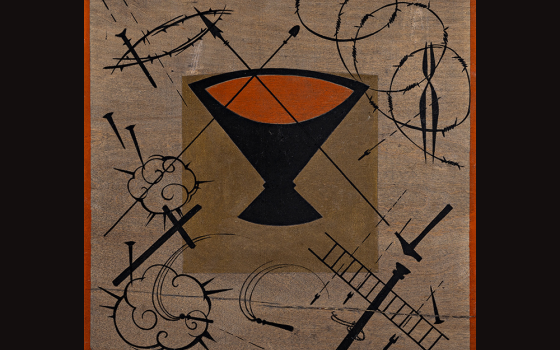If one more liberal politician or talking head speaks about “being on the right side of history” I am going to throw something at the television set. This phrase is, of course, Stalinist in its explicit origins and the ideological affinity with Stalinism should be obvious. But, hey, high school history lessons aren’t what they once were and, besides, the idea is at least implicit in non-Stalinist ideologies as well. In no instance does it make a whit of sense.
Whiggish history is probably the most obvious exemplar of a hyper-teleological understanding of history. Starting with Magna Carta, which was not very great for women or Jews, through the Glorious Revolution, which was not very good for us RCs, onto the 1781 showdown between King George III and Lord Rockingham about the terms by which the latter would form a government, which turned out well for us Americans, and into the achievement of universal suffrage, the Whig idea is that progress, and specifically the progress of liberty, is an ever expanding thing, and its trajectory in history is always upward and linear.
Churchill, both when he was a liberal and when he was a conservative, subscribed to this view of history, more or less, his problems with Whiggish attacks on his ancestor the Duke of Marlborough notwithstanding. The “less” in “more or less” comes from the fact that Churchill was acutely aware of human foibles and frailty, as reflected in his great quote about us Americans: “You can always count on the Americans to do the right thing – after they’ve tried everything else.” Still, his speeches are littered with references to the “broadlit uplands” towards which he thought humanity was marching. Of course, as a politician, Churchill was, pardon the expression, on the wrong side of history about Ireland and India, even though he was the one indispensable man on the right side of history when it mattered most, confronting Hitler.
The most extreme recent example of misunderstanding history as hyper-teleological came not from the left, but from the right, Francis Fukuyama’s 1992 The End of History. How is that thesis working out for you Mr. Fukuyama? Turns out the collapse of communism did not answer all the questions of social structure and governance then, or subsequently, and it was foolhardy not to recognize that. As Leon Wieseltier wrote at the time, “eschatological excitement seems to me very premature.”
There is the problem. The disappearance of communism made some think Western capitalism was not only ascendant at that moment, but definitively triumphant, that a kind of eschaton had been achieved, that the telos was upon us. It wasn’t. Or, in Churchill’s case, who could have known that Hitler was not on the right side of history on June 19, 1940? Many people on the right side of history about India were on that side for bad or imprudent reasons, and certainly had no idea of the massive violence that would accompany independence. It is not given to us to know how history will look back on our choices. But, this aping a Whiggish view of history today stems, I think, from the left’s unwillingness to engage moral language and ideas which are more properly the lens through which political decisions are made, and the right’s adherence to ridiculous moral language and ideas in justifying the decisions they reach.
I have wanted to write about this obnoxious phrase for some time, but I wanted to have a non-ideological example at hand when doing so. The World Series gave it to me.
The Kansas City Royals play in Kaufman Stadium and it was designed for baseball and baseball only. It is adjacent to Arrowhead Stadium, which was designed for football and football only. Back in the late 1960s and early 1970s, most cities were building multi-purpose stadiums, known as doughnut-holes, that hosted both football and baseball. Veterans Stadium in Philadelphia, Three Rivers Stadium in Pittsburgh, Riverfront Stadium in Cincinnati, Busch Stadium in St. Louis, Candlestick Park in San Francisco, etc. The Astrodome in Houston, Metrodome in Minneapolis and Kingdome in Seattle put roofs over their structures, but they were similarly designed for both baseball and football. The problem is not just that baseball requires a very different configuration from football, it is that baseball games happen several times a week and football games only once a week, so the anticipated crowd sizes vary enormously. Baseball teams found themselves playing in half empty stadiums. Football teams knew they could sell more tickets if only the capacities were larger. It was a disaster.
I was lucky growing up in New England: There is no way to fit a football field into Fenway Park. Chicago lucked out because it had two baseball teams with separate fields, one the venerable Wrigley, but the city managed to wreck its beautiful Soldiers’ Field with an addition that looks like it came out of a sci-fi movie. And, Los Angeles was home to two of the great football venues of all time, the Rose Bowl and the Coliseum, built for the 1932 Olympics. But, Kansas City chose to build two new stadiums side by side. They ran against the current, and they were proven right. As far as I can tell, Oakland is the only city still using a multi-purpose, doughnut-hole stadium.
In 1972, Kansas City opened its new Mid-Continent Airport, and it was dubbed “the airport of the future.” The three horseshoe terminals allowed travelers to park their cars within the horseshoe, right across from the gate they would be using. What could be more user-friendly than that? Dallas-Fort Worth built upon this design with five horseshoes, and Berlin’s Tegel airport modified the horseshoe into a large pentagonal shape, but following the same user-friendly model, keep the parking close to the gates, the gates stretched out along a long, single story concourse.
MCI was not, it turns out, the airport of the future. When security screening was introduced in an effort to stem the tide of hijackings in the late 1970s, the spread out design stopped being so user-friendly. A series of small security checkpoints serving only two or three gates made for long lines. Once past security, there are no restaurants because no restaurant can make a profit serving only the passengers at those two or three gates. Your baggage claim is close at hand, to be sure, but the whole design failed to anticipate how airports would be used in the future, and so their calculation of what constituted “user-friendly” was completely off. They have closed one of the three terminals and plans to build an entirely new concourse are on hold pending funding.
So, the next time someone claims that they are “on the right side of history,” instead of getting into a debate about Stalinism or Whiggish history, just ask them if they have ever flown through Kansas City, or if they remember Veterans Stadium in Philly or Three Rivers Stadium in Pittsburgh. It is not only that choices always involve unintended consequences, it is that unforeseeable events will intercede as well. In making decisions here and now, we can look to the lessons of history to be sure, but we need a different, moral language to justify our choices now than this foolish meme about “the right side of history.”




